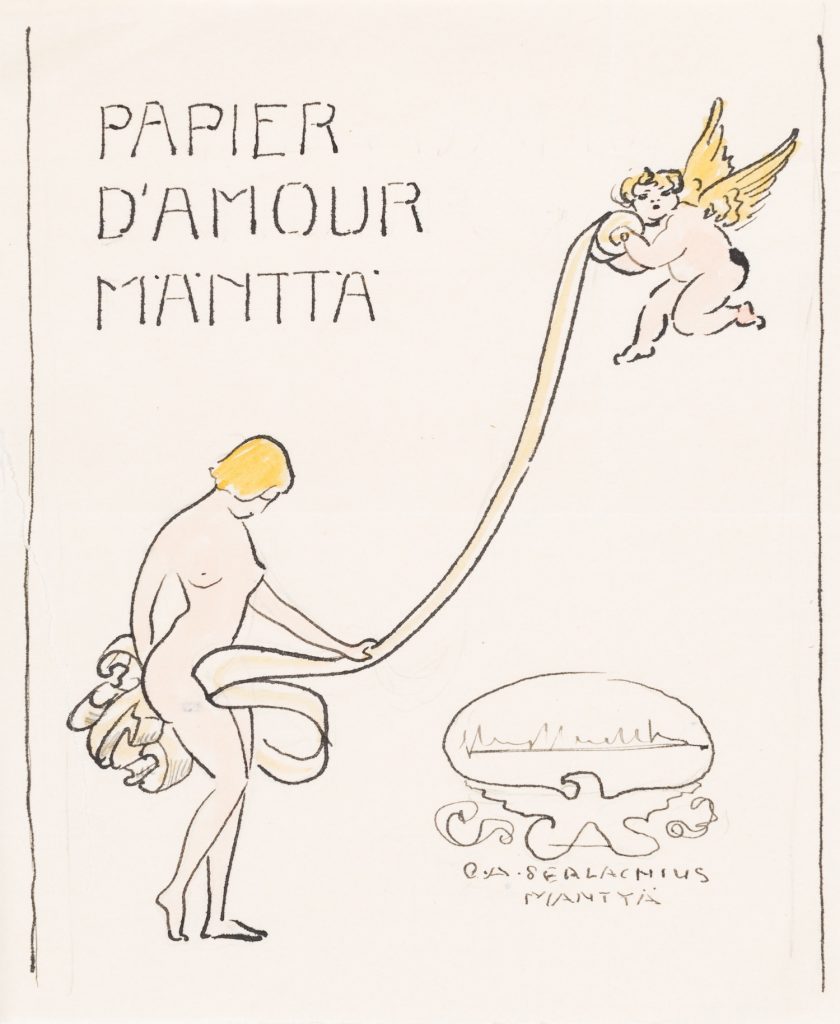Toilet paper of the G. A. Serlachius Ltd. Company – Papier d’amour
The production of Finnish toilet paper began at the mill of G. A. Serlachius Ltd. in Mänttä. Gösta Serlachius could appreciate the value of also this sort of paper. He commissioned an artist to design its labels and wrappings.
Eric O. W. Ehrström designed a Japonistic-style wrapping for toilet paper by the name of Silk. It was sold in packages containing 1000 sheets. Out of modesty at first only pharmacies sold this rather a genteel toilet paper.
”As you know, we produce toilet paper for domestic and foreign market also in rolls”, Gösta Serlachius wrote in a letter to Ehrström in October 1932. ”Nowadays one must find a catch phrase that is anchored to the consciousness of the public so that when people aim to buy an article, they will remember to ask for the one that we want to sell.”
Gösta Serlachius suggested the slogan ”MÄNTTÄ PARAS” (MÄNTTÄ BEST), in which ”World’s BEST” toilet paper would be linked to ”MÄNTTÄ” in capital letters.
The letter ends with a request that Ehrström should come up with a simple and fun proposal that they would print using one or two colours at the most. It is possible that the undated sketch by Ehrström shown in the image found its inspiration there. It comprises the artist’s freedom in its slogan as well as in the presentation of the motif.
In 1933 Eric O.W Ehrström designed also a toilet roll holder.
The average Finn uses nowadays 60 rolls of toilet paper per year. Mänttä mill produces approximately half of the tissue paper sold in Finland.
It is a fortunate fact for the paper industry in Finland and in Mänttä that you cannot digitalise wiping. Furthermore, the rise in the living standard increases the global sales of tissue paper by four per cent each year. Paper industry will, hence, prevail even though reading is possible on a digital platform.
From G. A. Serlachius Ltd. originating Metsä Tissue has 11 production sites in six countries in the continental Europe north of the Alps. World conquest is hindered due to the fact that, unlike printing paper, tissue paper is a consumer product. A product must have a strong brand. Gösta Serlachius was aware of this as early as in the 1920s and 1930s.
Helena Hänninen
Curator


